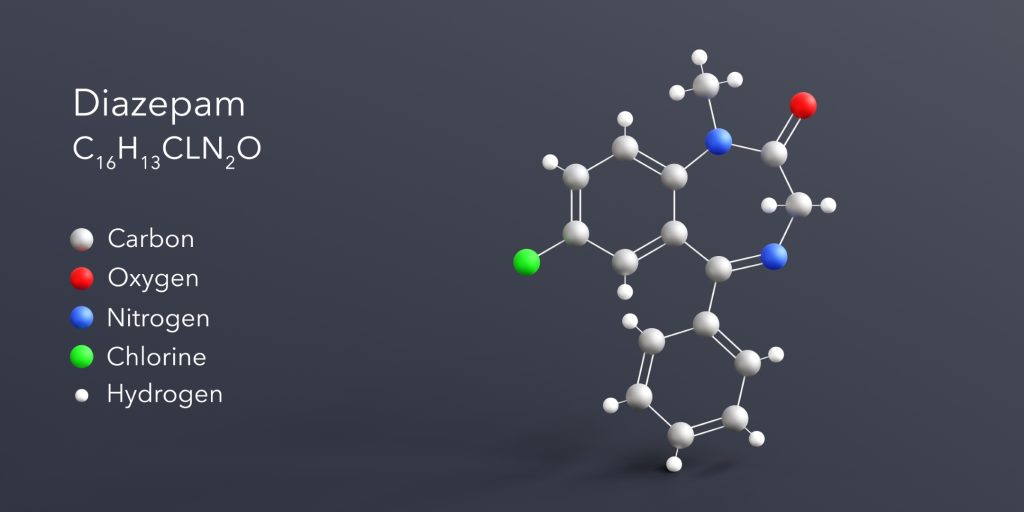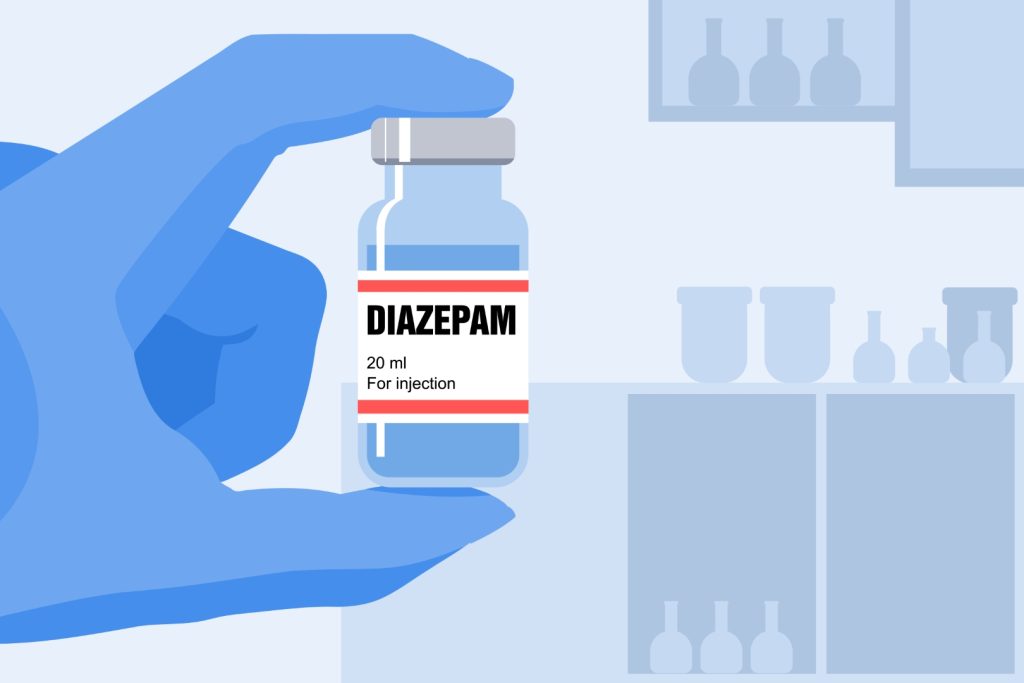Valium, the brand name for diazepam, is a benzodiazepine medication commonly prescribed for anxiety, muscle spasms, and by medical providers to stop a seizure. Like other benzodiazepines, Valium has a calming effect on the brain and central nervous system. While it can be effective for short-term treatment, Valium carries significant risks, including dependence, addiction, and potentially dangerous withdrawal symptoms. This post will explore what Valium is, its intended uses, potential side effects, the dangers of misuse, and the importance of medically supervised detox.
What is Valium?
Valium (diazepam) is a central nervous system (CNS) depressant that belongs to the benzodiazepine class of drugs. It works by enhancing the effects of the neurotransmitter gamma-aminobutyric acid (GABA) in the brain. GABA helps to reduce nerve activity, producing a calming and sedative effect. [1]

Medical Uses of Valium:
Valium is prescribed for a variety of conditions, including:
Anxiety Disorders: Generalized anxiety disorder (GAD), panic disorder, and social anxiety disorder, when other medications haven’t worked.
Muscle Spasms: Valium may be used as a secondary option to help relieve muscle spasms.
Seizures: Valium is sometimes used by medical providers to stop a seizure that is not stopping on its own particularly when prolonged (status epilepticus).
Alcohol Withdrawal: Valium can help manage the symptoms of alcohol withdrawal, such as tremors and anxiety, while helping to prevent the more severe symptoms such as seizures and delirium tremens.
Pre-Procedure Sedation: Valium is sometimes used to relax patients before medical or dental procedures.
It’s important to note that Valium, like other benzodiazepines, is generally recommended for short-term use due to its potential for dependence. [2]
Side Effects of Valium:
Even when taken as prescribed, Valium can cause side effects, which may include:
- Drowsiness and fatigue
- Dizziness and lightheadedness
- Muscle weakness
- Impaired coordination and balance
- Confusion
- Memory problems
- Slurred speech
- Headache
- Blurred vision
- Changes in appetite or weight

Valium Dependence and Addiction:
Regular use of Valium, even as prescribed, can lead to tolerance, dependence, and addiction.
Tolerance: The body adapts to the presence of Valium, requiring higher doses to achieve the same effect. This increases the risk of overdose and the potential severity of withdrawal.
Physical Dependence: The body becomes reliant on Valium to function normally, and abrupt discontinuation can trigger withdrawal symptoms.
Psychological Dependence: Individuals may feel unable to cope with anxiety, stress, or other symptoms without the drug, leading to compulsive use.
Valium Withdrawal:
Valium withdrawal can be severe and potentially life-threatening. Symptoms can range from mild to severe and may include:
- Rebound Anxiety and Insomnia: Anxiety and sleep problems that are worse than before starting Valium.
- Restlessness and Agitation
- Tremors and Muscle Spasms
- Sweating
- Nausea and Vomiting
- Headaches
- Seizures (in severe cases)
- Hallucinations
- Delirium
Due to the serious risks associated with Valium withdrawal, it is crucial to never stop taking Valium suddenly or without medical collaboration. A medically supervised detox program is the safest and most effective way to manage withdrawal symptoms and begin the recovery process. [3]

The Dangers of Mixing Valium with Other Substances:
Combining Valium with other CNS depressants, such as alcohol, opioids, or other benzodiazepines, is extremely dangerous. This combination can significantly increase the risk of:
- Respiratory Depression (slowed or stopped breathing)
- Overdose
- Coma
- Death
Seeking Help for Valium Addiction:
If you or someone you know is struggling with Valium use, it’s essential to seek professional help. Recovery is possible, and a comprehensive treatment plan can provide the support and resources needed to overcome addiction.
Treatment typically involves:
Medically Supervised Detox: A safe and controlled environment to manage withdrawal symptoms, often involving a gradual tapering of the Valium dose.
Inpatient Rehabilitation: Intensive therapy and support in a residential setting.
Outpatient Treatment: Ongoing therapy and support while living at home.
Therapy: Cognitive-behavioral therapy (CBT), individual counseling, group therapy, and family therapy can help address the underlying causes of addiction and develop coping strategies.
Support Groups: 12-step and non-12-step programs and support groups provide peer support, encouragement, and a sense of community.
Conclusion:
Valium can be an effective medication for managing anxiety, muscle spasms, and seizures when used as prescribed and for short periods. However, its potential for dependence, addiction, and dangerous withdrawal makes it vital to understand the risks. If you’re concerned about your Valium use or the use of someone you care about, don’t hesitate to seek professional help. Recovery is possible with the right support and treatment.
If you are experiencing Valium dependence, please contact Gallus Detox today to explore your treatment options.
Sources:
National Institute on Drug Abuse (NIDA): Benzodiazepines and Opioids. https://www.drugabuse.gov/drug-topics/opioids/benzodiazepines-opioids
American Psychiatric Association: Diagnostic and Statistical Manual of Mental Disorders, Fifth Edition (DSM-5).
Substance Abuse and Mental Health Services Administration (SAMHSA): Detoxification and Substance Abuse Treatment. https://store.samhsa.gov/product/TIP-45-Detoxification-and-Substance-Abuse-Treatment/SMA13-4131
Diazepam: a benzodiazepine for short-term use: https://www.ncbi.nlm.nih.gov/pmc/articles/PMC3778753/
Drug Enforcement Administration (DEA): Diazepam Drug Fact Sheet. (While the DEA site is a good general resource, a more specific fact sheet link might be difficult to find and may change. Linking to NIDA as above is a good alternative.)



